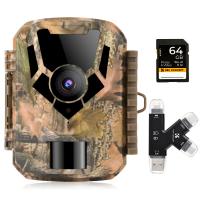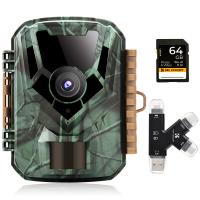How To Format A Write Protected Sd Card?
Formatting a write-protected SD card can be a challenging task, especially for those who are not familiar with the intricacies of data storage devices. Write protection is a feature that prevents data from being modified or deleted, which can be useful for safeguarding important information. However, it can also be a hindrance when you need to format the card for new use. In this article, we will explore various methods to format a write-protected SD card, addressing common issues and providing practical solutions.
Understanding Write Protection

Before diving into the methods to format a write-protected SD card, it is essential to understand what write protection is and why it exists. Write protection can be enabled through a physical switch on the SD card or through software settings. The physical switch is usually a small tab on the side of the card that can be moved to enable or disable write protection. Software write protection, on the other hand, is implemented through the file system and operating system settings.
Common Reasons for Write Protection

1. Physical Lock Switch: The most common reason for write protection is the physical lock switch on the SD card. When this switch is in the "Lock" position, the card becomes write-protected.
2. File System Errors: Corrupted file systems can sometimes cause the SD card to become write-protected.
3. Registry Settings: In some cases, the Windows registry settings can cause write protection.
4. Malware: Malware or viruses can also enable write protection on your SD card to prevent you from accessing or modifying the data.
Methods to Format a Write-Protected SD Card

1. Check the Physical Lock Switch

The first and simplest step is to check the physical lock switch on the SD card. If the switch is in the "Lock" position, move it to the "Unlock" position. This should disable the write protection and allow you to format the card.
2. Use Diskpart Utility (Windows)
If the physical switch is not the issue, you can use the Diskpart utility in Windows to remove write protection and format the SD card. Here are the steps:
1. Press `Win + R` to open the Run dialog box.
2. Type `diskpart` and press Enter. This will open the Diskpart command-line utility.
3. Type `list disk` and press Enter. This will display a list of all connected storage devices.
4. Identify your SD card from the list and note its disk number.
5. Type `select disk X` (replace X with the disk number of your SD card) and press Enter.
6. Type `attributes disk clear readonly` and press Enter. This will remove the write protection.
7. Type `clean` and press Enter. This will erase all data on the SD card.
8. Type `create partition primary` and press Enter. This will create a new partition on the SD card.
9. Type `format fs=fat32` and press Enter. This will format the SD card with the FAT32 file system.
3. Modify Registry Settings (Windows)
If Diskpart does not work, you can try modifying the registry settings to remove write protection. Here are the steps:
1. Press `Win + R` to open the Run dialog box.
2. Type `regedit` and press Enter. This will open the Registry Editor.
3. Navigate to the following path: `HKEY_LOCAL_MACHINE\SYSTEM\CurrentControlSet\Control\StorageDevicePolicies`.
4. If you do not see the `StorageDevicePolicies` key, you will need to create it. Right-click on `Control`, select `New > Key`, and name it `StorageDevicePolicies`.
5. Right-click on `StorageDevicePolicies`, select `New > DWORD (32-bit) Value`, and name it `WriteProtect`.
6. Double-click on `WriteProtect` and set its value to `0`.
7. Close the Registry Editor and restart your computer.
After restarting, try formatting the SD card again.
4. Use Third-Party Software
If the above methods do not work, you can use third-party software to format the write-protected SD card. Some popular options include:
- SD Formatter: Developed by the SD Association, this tool is specifically designed for formatting SD cards.
- EaseUS Partition Master: A comprehensive partition management tool that can format write-protected SD cards.
- MiniTool Partition Wizard: Another powerful partition management tool that can help you format write-protected SD cards.
5. Use a Different Device
Sometimes, the issue may be with the device you are using to format the SD card. Try using a different computer or card reader to see if the problem persists. In some cases, using a different device can bypass the write protection and allow you to format the card.
Preventing Write Protection Issues
To avoid write protection issues in the future, consider the following tips:
1. Handle with Care: Always handle your SD card with care to avoid damaging the physical lock switch.
2. Regular Scans: Regularly scan your SD card for malware and viruses to prevent software-based write protection.
3. Backup Data: Regularly back up your data to avoid data loss in case of write protection issues.
4. Use Reliable Devices: Use reliable card readers and devices to avoid compatibility issues.
Formatting a write-protected SD card can be a frustrating experience, but with the right approach, it is possible to overcome this challenge. By checking the physical lock switch, using the Diskpart utility, modifying registry settings, or using third-party software, you can remove write protection and format your SD card. Additionally, taking preventive measures can help you avoid write protection issues in the future. With these methods and tips, you can ensure that your SD card remains functional and ready for use.











There are no comments for this blog.